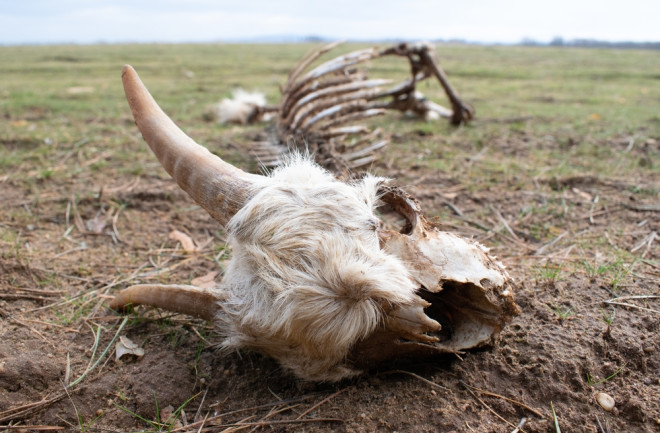When early humans first arrived in modern-day Spain, about a million and a half years ago, they immediately faced a quandary: what to eat?
Scientists have long suspected that they borrowed from the still-fresh kills of saber-tooth cats, which would have only eaten a portion of their meal. In doing so, Homo erectus, or perhaps another early hominin, would have faced competition from the bone-crushing giant hyena, a long-extinct scavenger that would have weighed more than 200 pounds.
But have no fear. A new computer simulation has found that with sufficient numbers, human groups could have scavenged enough meat to sustain a healthy population. There’s only one catch: To really excel at scavenging, they would have had to scare off the occasional hyena and take a kill by force.
Were Ancient Humans Scavengers?
On a featureless, virtual landscape, researchers pitted two species of saber-tooth cats – plus the extinct European jaguar – against wayward bands of hunter-gatherers, in a simulation to test the plausibility of early human scavenging.
After running more than 400 games, the researchers concluded that a fully passive style of scavenging – snatching some carrion when no one is looking – was too retiring and less than ideal. The virtual humans needed to occasionally get in there and confront a hyena with a group of determined hunters.
Per the simulation, more than 10 humans were enough to shoo away any of the predators, and thus the researchers found that a population of about a dozen hit the sweet spot. Beyond that, the negatives of adding more people exceeded the positives.
Group size proved to be the most important factor in human survival, along with the density of saber-tooth cats and thus their leftovers.
The model used now-extinct species from ancient Europe including Homotherium latidens, a hulking cat that wielded serrated, saber-toothed teeth and strong forearms. Based on its genetic strengths for running, H. latidens likely chased down its prey to the point of exhaustion.
Read More: Which Animals Did Early Humans Mainly Hunt?
Did Animal Scavenging Help Early Humans Develop?
The protein and fat from carrion would have fueled the early humans’ brain and body growth. In modern-day humans, the brain is about 60 percent fat, and protein – Greek for “of utmost importance” – makes up about 20 percent of the body.
Carrion bones may also have stimulated technological development as early humans fashioned them into tools such as multi-purpose “retouchers” used to sharpen stone edges.
Also, the need to work together as a group while scavenging animals could have stimulated the development of language, the paper states. A group that wielded tools and language could have closed in on a corpse, quickly stripped it of its meat and slipped away.
Read More: What Did Ancient Humans Look Like?

